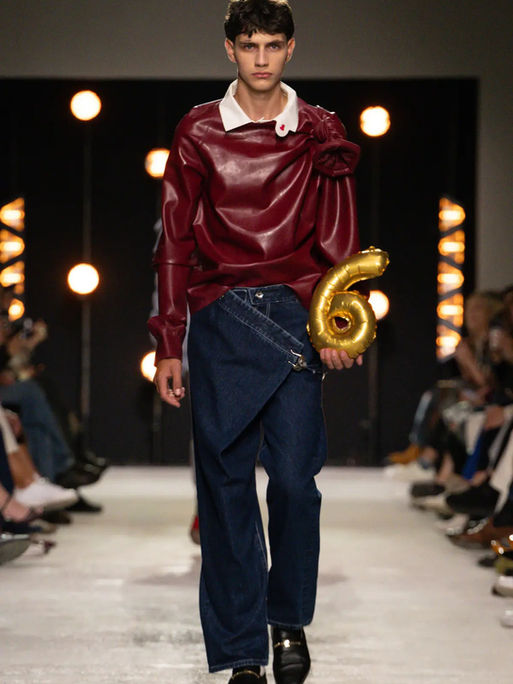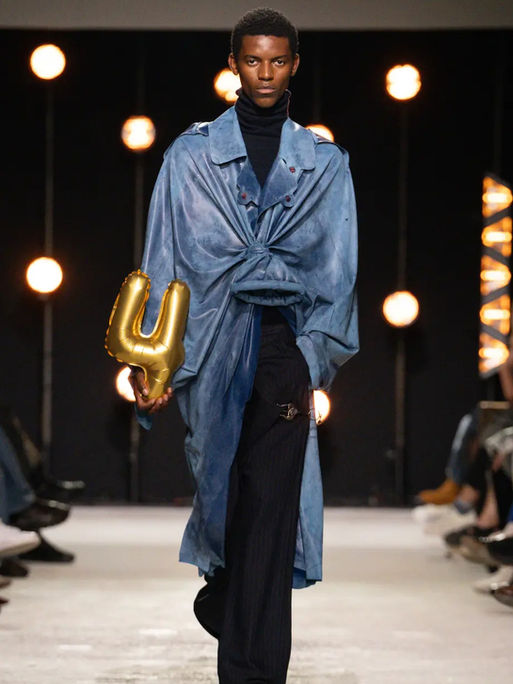HYÈRES 40. A CELEBRATION AT LA VILLA NOAILLES
A NEW ERA AT HYÈRES?
INSIDE THE RESET AND FUTURE OF THE FASHION FESTIVAL
WITH LESS GLITTER AND MORE GRAVITY, THIS YEAR’S FESTIVAL HAD A QUIET QUESTION AT ITS HEART; BUT WHAT DOES IT MEAN TO NURTURE CREATIVITY TODAY?
Written by Kristen Vonnoh
Sunlight in Hyères shines differently in October. Still golden and cinematic, but softer now, quieter. The glittering summer crowds have gone, and the local life is vibrant. Held from October 16th to 18th, this anniversary edition marked not just a milestone, but a recalibration. Gone were the extravagant soirées and late-night villa parties that once defined the Hyères mythology. In their place was a focused energy around the young designers and the collections of fashion, photography, and accessories present. It was a refreshing way of focusing on the reason we were all there.
As the 40th edition of the International Festival of Fashion, Photography, and Accessories unfolded at Villa Noailles, that same soft light seemed to mirror the mood: a festival once synonymous with exuberance, now tracing the contours of a new sensibility.
After a turbulent year, the Villa Noailles welcomed a new director, Hugo Lucchino, formerly director of the Palais Galliera, after the departure of the festival’s founder, Jean-Pierre Blanc. The change felt both administrative and emotional, as speaker after speaker came up to the microphone to pay homage to Jean-Pierre.
It began, as it always does, with giddy anticipation. Parisians spilling from trains, the sound of luggage wheels over cobblestones, a sun that felt slightly too warm for autumn. But beneath the familiarity, something had shifted. The opening ceremony was brisk and simple. After the speeches, Ascendant Vierge took the stage in a flash of sound and synths under the provençal sun. It wasn’t extravagant, but it didn’t need to be; this year, Hyères felt more contained and more reserved.
In a perhaps symbolic move, the festival introduced an all-designer jury, forgoing the traditional figure of a festival president. Among them were Jean-Charles de Castelbajac, Julien Dossena, Louis Gabriel Nouchi, Alexandre Mattiussi, and Viktor & Rolf; a constellation of designers representing different chapters of contemporary European fashion. This flattening of hierarchy felt aligned with the wider undercurrent of the festival, celebrating and nurturing young talent.

The Grand Prix du Jury Mode went to Lucas Emilio Brunner, whose collection À Bout de Soufflé floated between ballooning forms and Ivy League codes. Adrien Michel received the 19M Métiers d’Art Prize for his use of technical sportswear and refined craftsmanship. Layla Al Tawaya was awarded the Ateliers des Matières Prize for her gender-fluid leather and tulle constructions. Youssef Zogheib earned the Public Prize for menswear with couture precision.
The Prix Supima, created for the 40th anniversary of the Festival, rewards the best use of SUPIMA cotton, a signal of the festival’s growing ties to the industry and its material economies. The winner was Noah Almonte, who received fabric support for his next collection and a trip to New York for the Supima Design Lab 2025.
Under Lucchino’s direction, though still fresh, the Villa Noailles appears to be entering a different era. There’s talk of transparency, recalibration, and institutional renewal. The Robert Mallet Stevens’ 1923 modernist villa has always been a vessel for artistic optimism, an architecture of light and possibility. This year, it became something else too: a metaphor for resilience. Pascale Mussard, the Villa’s President, beautifully spoke of the artistic vision of the Noailles during the opening ceremony, citing the artistic heritage and patronage of its original owners, Charles and Marie-Laure de Noailles.
The collections and exhibitions from the 2025 festival will remain open until January 11, 2026. They linger in the rooms of Villa Noailles, where the old indoor pool once was, shapes, textures, and experiments in silhouette, each one carrying the trace of a generation negotiating its place in an industry that never stops shifting.
The light fades early in Hyères this time of year, signalling the arrival of colder days. Still, it leaves behind a glow that is reflective, uncertain, and full of questions about what comes next.





